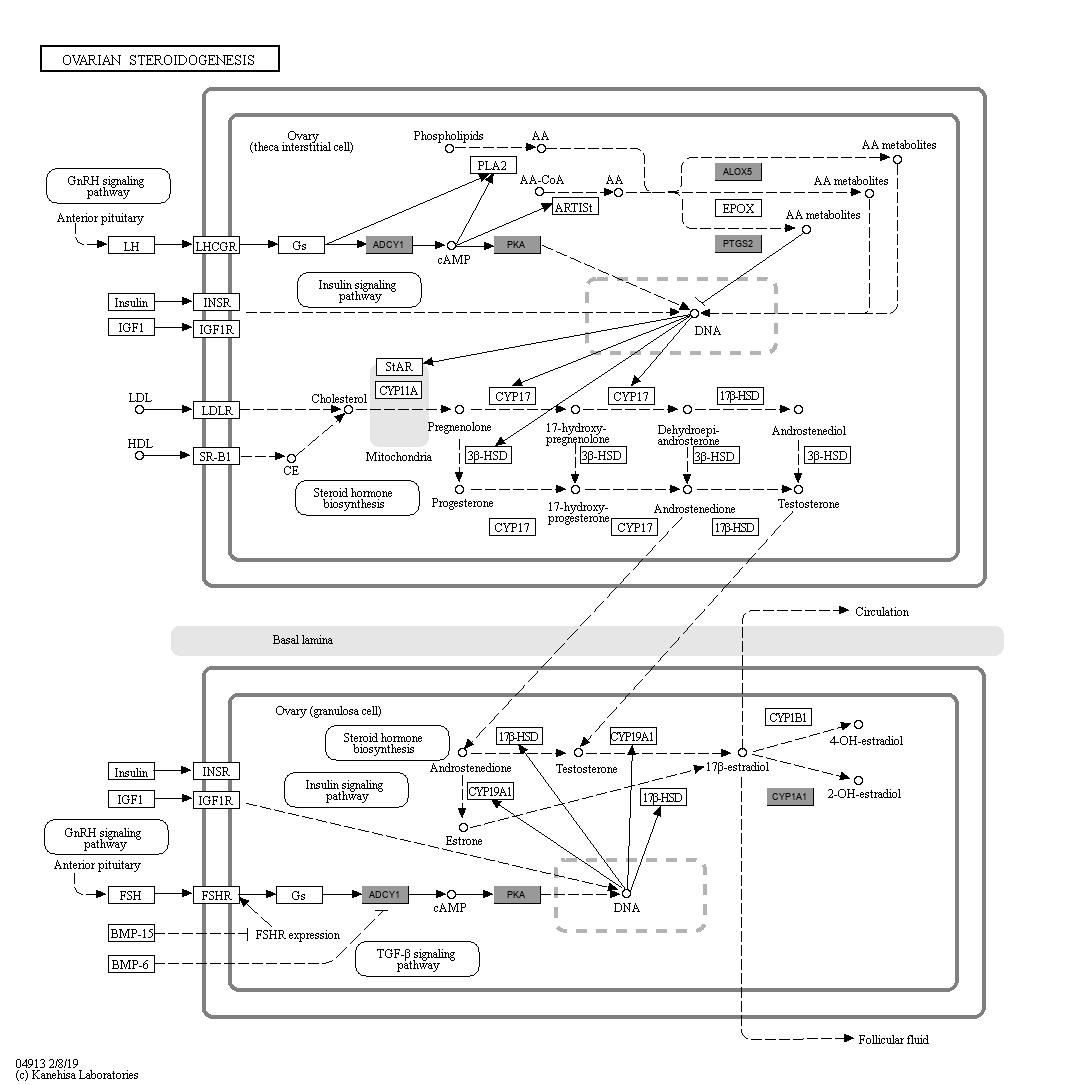|
The ovarian steroids, 17-beta estradiol (E2) and progesterone (P4), are critical for normal uterine function, establishment and maintenance of pregnancy, and mammary gland development. Furthermore, the local effects that are essential for normal ovarian physiology are dependent on the endocrine, paracrine, and autocrine actions of E2, P4, and androgens. In most mammals (including humans and mice), ovarian steroidogenesis occurs according to the two-cell/two-gonadotropin theory. This theory describes how granulosa and theca cells work together to make the ovarian steroids. Theca cells respond to LH signaling by increasing the expression of enzymes necessary for the conversion of cholesterol to androgens, such as androstenedione (A) and testosterone (T). Granulosa cells respond to FSH signaling by increasing the expression of enzymes necessary for the conversion of theca-derived androgens into estrogens (E2 and estrone).
|
 Ovarian steroidogenesis - Reference pathway
Ovarian steroidogenesis - Reference pathway

 Ovarian steroidogenesis - Reference pathway
Ovarian steroidogenesis - Reference pathway

